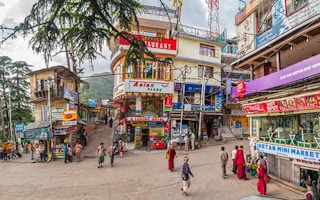South Asia’s medium-sized and secondary cities, rather than its megacities, will determine whether urban development succeeds or fails in the region says a UN report.
The State of Asian and Pacific Cities 2015, released in October 2015 by the UN Human Settlements Programme (UN-Habitat) and the UN Economic and Social Commission for Asia and the Pacific (ESCAP), says that the way cities develop while still home to a small population can determine how sustainable they are decades later.
This includes how they approach energy and resource management and the development of effective and accountable governance.
“They are the window to the future urban world,” Donovan Storey, chief of the sustainable urban development, environment and development division at ESCAP tells SciDev.Net. “In avoiding the mistakes made by the region’s larger megacities we must re-shape our urban future through rapidly growing secondary cities.”
Several South Asian countries lack national urban policies or development frameworks, resulting in government ministries and local bodies being out of step with each other, says the report. It proposes integrated planning, in which national urban strategies guide local authorities to plan for and meet the needs of their cities.
A key challenge highlighted by the report is the need to eliminate drivers of inequality that can result in significant differences in the experiences of various communities inhabiting the same spaces. “Urbanisation has no doubt contributed greatly to the region’s success in reducing poverty,” says Storey. “However urban inequality remains a significant problem.”
There is a need for an ‘urban data revolution’ to combat this inequality among city populations, say the authors of the report. However, there is a dearth of data, particularly around the workings of the informal sector. “We are planning for cities in an absence of information in many key areas, and in ignorance of majority populations in some cases.”
“If the new urbanisation does not acknowledge the diversity of urban settings being composed of different interest groups and classes of people…if urbanisation primarily favours and benefits the rich in terms of opportunities and access to resources in the spaces of city, the commutate effect will be aggravation of inequality,” warns Udan Fernando, executive director, Centre for Poverty Analysis (CEPA), Colombo.
Asian cities should prioritise equitability, inclusivity and allow diverse groups of city inhabitants to participate in how their cities are designed and maintained, Fernando says.

















